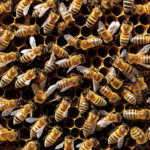Anastasia Beverly Hills (ABH) has long been a powerhouse in the beauty industry, renowned for its brow products and high-glam marketing strategies. However, recent developments paint a picture of a brand struggling to maintain its prior glory. Once valued at $3 billion and the darling of influencers and beauty enthusiasts alike, the company is now facing a challenging crossroads as its main investor, TPG Capital, seeks to exit.
In 2018, following a remarkable trajectory of growth, TPG Capital made a significant investment in ABH, which at that time was riding high on the popularity of its extensive product range tailored for the Instagram generation. Founder Anastasia Soare articulated a vision that included global expansion and a push towards direct-to-consumer sales. Yet, over time, the industry landscape has shifted dramatically, and ABH is now struggling to adapt.
The brand’s core offerings, which thrived on full-coverage makeup and defined brows, have lost their luster. Consumers are now gravitating towards lighter, more natural looks, epitomized by the declining popularity of the thick, “Instagram brow.” Products that once sold out repeatedly have seen diminished demand as brands like Glossier and Refy have introduced alternatives that appeal to the modern aesthetic—think brushed-up brows and tinted balms that provide a more understated finish.
The brand’s decline is starkly illustrated in recent sales figures. Reports indicate that during the third quarter of 2023, ABH saw a 12 percent drop in net sales, totaling $69.8 million. As TPG Capital’s patience wears thin, options for the future are narrowing. The private equity firm retains the right to redeem its equity after six years, and they are now poised to exercise this option. With over $600 million in loans coming due in 2025 and a grim credit rating of CCC-, analysts predict a high risk of default or necessary corporate restructuring.
While ABH has attempted to innovate with the launch of fresher products, including a new brow gel and a lightweight foundation that align more closely with current beauty trends, it may not be enough in a crowded marketplace. The growth of independent brands and legacy companies heavily leveraging social media to gain visibility creates fierce competition that ABH has struggled to match. Even its impressive following of 18.5 million on Instagram fails to provide the same edge it did in the past when the brand became synonymous with influencer culture.
Adding to the complexity of its situation, market trends are increasingly favoring value over brand loyalty. Cheaper alternatives from brands such as Nyx and E.L.F. have captured the attention of budget-conscious consumers, making it difficult for ABH to compete—not only on price but also on product relatability. The beauty landscape has become more convoluted with myriad options, many of which connect on a relatable, accessible level with consumers.
The resurgence of ABH is possible, but hurdles remain. It is essential for the brand to cultivate a compelling marketing narrative that resonates with today’s consumer, alongside a strategic review of product offerings. Advertising campaigns driven by engaging content and collaborations with new influencers could breathe life back into the brand. However, high debt levels limit the company’s capacity for extensive marketing investments.
At a critical junction, ABH must grasp the reality of an evolving beauty standard. While its legacy is rooted in glamour and maximalism—the picturesque embodiment of the influencer era—today’s beauty consumers favor authenticity, transparency, and relatability. Anastasia Beverly Hills is not without resource; historically, it has managed to navigate financial distress and consumer trends effectively. Yet, immediate action is imperative. The market is unforgiving, and every day that passes without a turnaround can diminish its chances of reclaiming its crown.
For leadership to steer ABH back on a course toward recovery, a blend of product innovation that respects new beauty standards and an aggressive, fresh marketing strategy are essential. Without such measures, the beauty community may soon witness the brand transition from a revered icon to a cautionary tale of a beauty empire that could not adapt to change.











